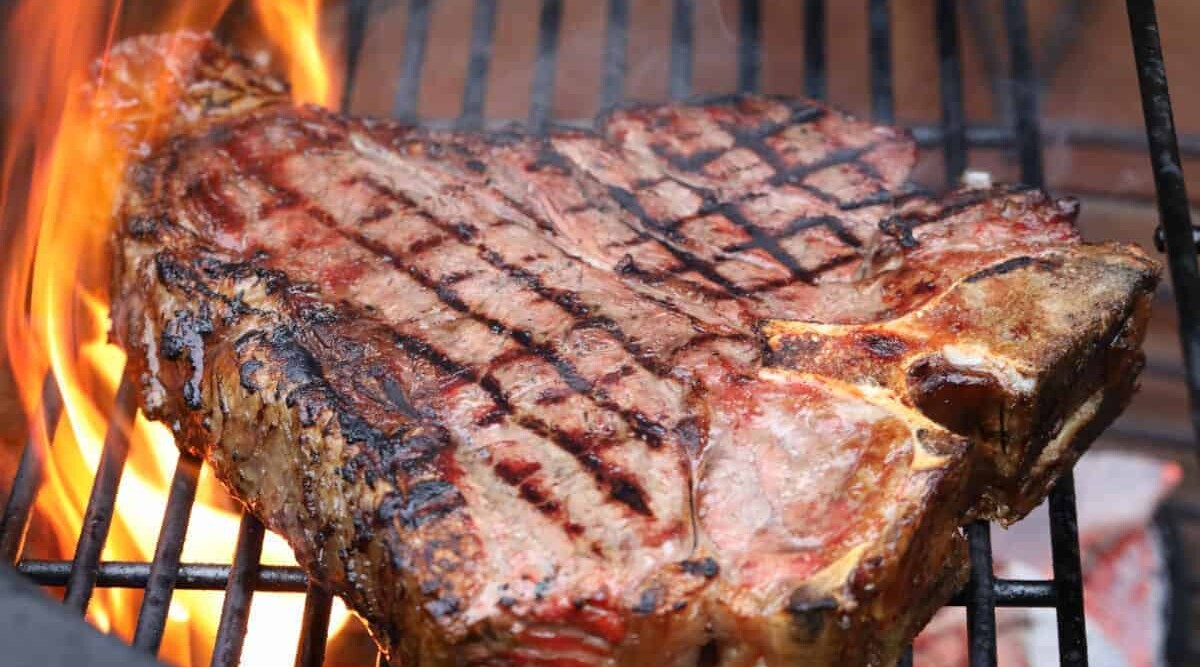
What if the waiter at the steakhouse asks: “Would you rather have a T-bone steak or a porterhouse steak for the main course?”
Do you know the difference? They’re quite pricey and guaranteed to be a quality steak dinner. But, which one should you choose? Most of us can’t tell the difference because they look almost identical.
They both have that signature “T” shaped bone separating two delicious pieces of meat. So when comparing porterhouse vs T-bone steak, how can we tell them apart, and do we even need to?
One side of the T-bone, the larger meat portion is the NY strip (also known as Sirloin or Strip Steak) and on the other side is the tenderloin or filet mignon steak. This extra-lean, super tender meat comes from the short loin, located on the back of the cow and is the most expensive cut.
The distinctive T-bone is the lumbar vertebra or backbone.
See the confusion here? Unlike when discussing a porterhouse vs a ribeye, they both come from the same part of a cow and appear to be similar, so what is the difference?
We hope to clean up any confusion you may have in our following discussion of porterhouse vs T-bone steak. We will show you how to identify the differences, helping you to make the right choice between the two should you need or want to.
Jump to:
- 1 The Difference Between T-Bone and Porterhouse Steak
- 2 Where do they Come From on a Cow?
- 3 The Secret of Buying a Quality Porterhouse Steak
- 4 Got a Big Party? Use IMPS Numbers to Order Your Steaks
- 5 Where to Buy Porterhouse Steaks Online
- 6 Is Charles Dickens Responsible for Naming the Porterhouse Steak?
- 7 Grilling the Perfect Porterhouse or T-Bone Steak
- 8 Tips On Choosing and Grilling a Fabulous T-Bone Steak
- 9 Share Your “King of the T-Bones” Feast With Others
The Difference Between T-Bone and Porterhouse Steak
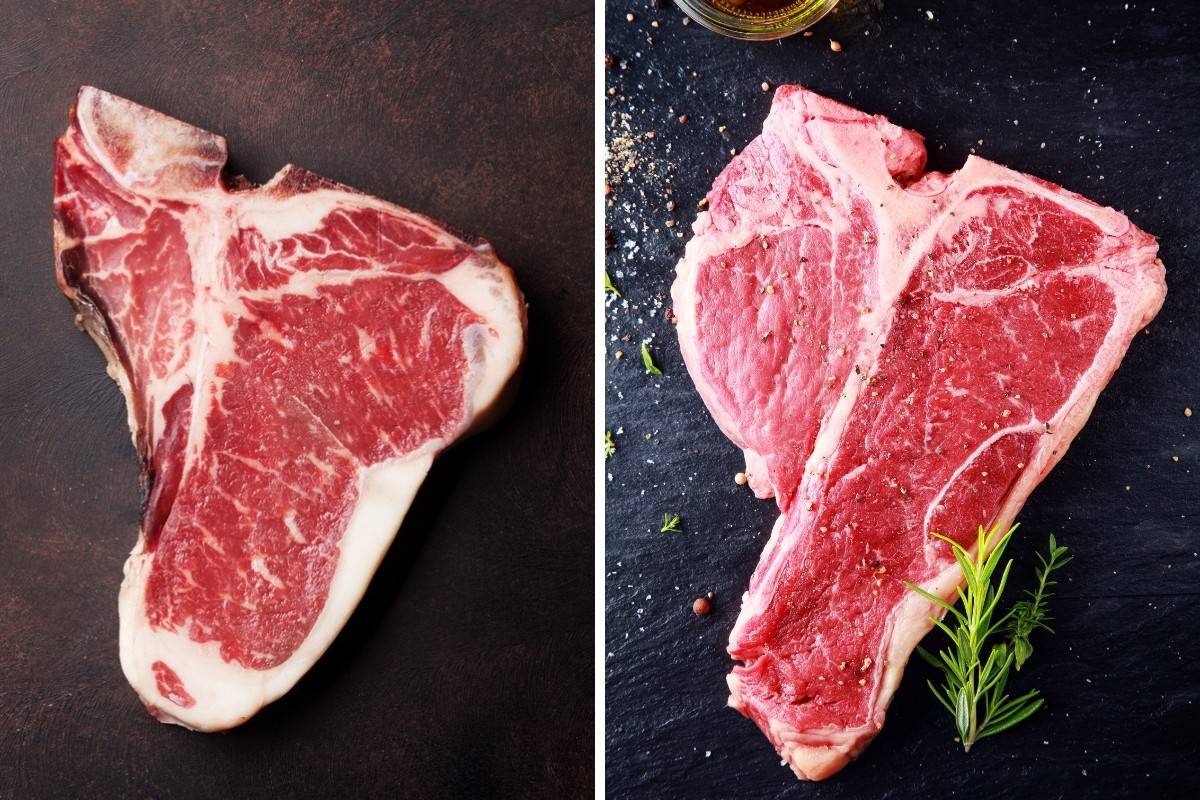
As discussed in depth in our article, what is a porterhouse steak, The U.S. Department of Agriculture specifies T-bone and porterhouse characteristics based on the thickness of the tenderloin section.
To be a porterhouse: The tenderloin must be a minimum of 1.25 inches in diameter from the bone across the widest section on the filet.
To be a T-bone: The tenderloin must be between 1.24 inch and 0.25 inches.
With a tenderloin section anything under 0.25 inches, they’re called “Bone-on NY strip” or “Club” steaks.
According to TexasSteakOnline.com:
Porterhouse steaks are cut from the rear end of the short loin and thus include more tenderloin steak, along with (on the other side of the bone) a large strip steak. T-bone steaks are cut closer to the front, and contain a smaller section of tenderloin.
Here are some approximate weights and thicknesses of porterhouse steaks you’ll see in butcher shops and restaurants:
- 16 oz. portion is 1.25 inches thick
- 24 oz. portion is 1.5 inches thick
- 48 oz. portion is 2.25 inches thick
Interestingly, a porterhouse is a type of T-bone steak, but a T-bone steak is not a porterhouse.
The difference is the amount of tenderloin in the steak. So with porterhouse, there are two different cuts, one better than the other.
Where do they Come From on a Cow?
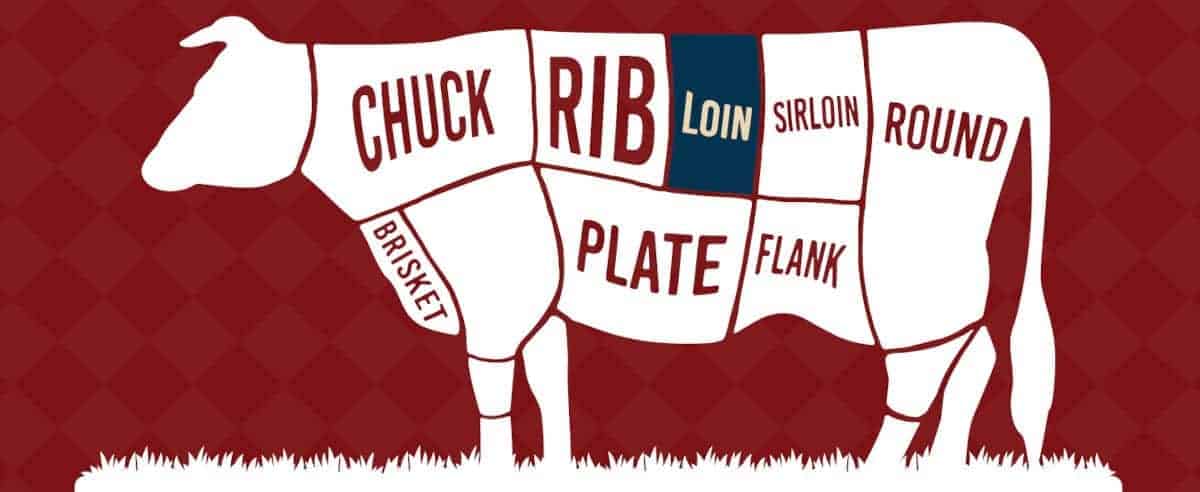
T-bones are taken from the loin primal of the cow, the first primal to the rear of center on the animal. And of course, so does the porterhouse.
If interested in steak cuts and where they come from, you should definitely check out our beef cuts diagram and guide! 🙂
The Secret of Buying a Quality Porterhouse Steak
Not all porterhouse steaks are equal. The steaks with the largest piece of tenderloin aren’t necessarily the best. Here’s the secret.
The end of the short loin, about the last 6 inches, is where the tenderloin is the widest. On the sirloin side of the steak, you’ll see what looks like a smaller steak attached to it. That piece of meat tends to be chewy, and the connective tissue is a tough piece of sinew that divides the two.
Look for the porterhouse that has a generous portion of tenderloin and a solid piece of strip steak on the other without the extra piece and dividing line.
To see the secret of how to buy a quality porterhouse, check out this video.
Another way to ensure you’re buying the right steak is to use the IMPS number.
Got a Big Party? Use IMPS Numbers to Order Your Steaks
If you’re planning a huge party, or you run a restaurant or catering business, then order by the numbers.
The USDA has standard specifications for every cut of meat. Each cut has a corresponding number used to specify it when ordering. You can find the specs and numbers in the guide known as the Institutional Meat Purchase Specifications (IMPS).
Although the IMPS recommends some specifications, they are voluntary. However, it’s a common practice for most butchers to use these codes for standardization and easy reference. So next time you need to order in quantity, use these numbers:
- Item No. 1173 — Porterhouse Steak
- Item No. 1174 — T- Bone Steak
How did porterhouse steak get its peculiar name? Although they cannot be proven, I dug around and found some good stories about the origin of the name.
Where to Buy Porterhouse Steaks Online
Snake River Farms
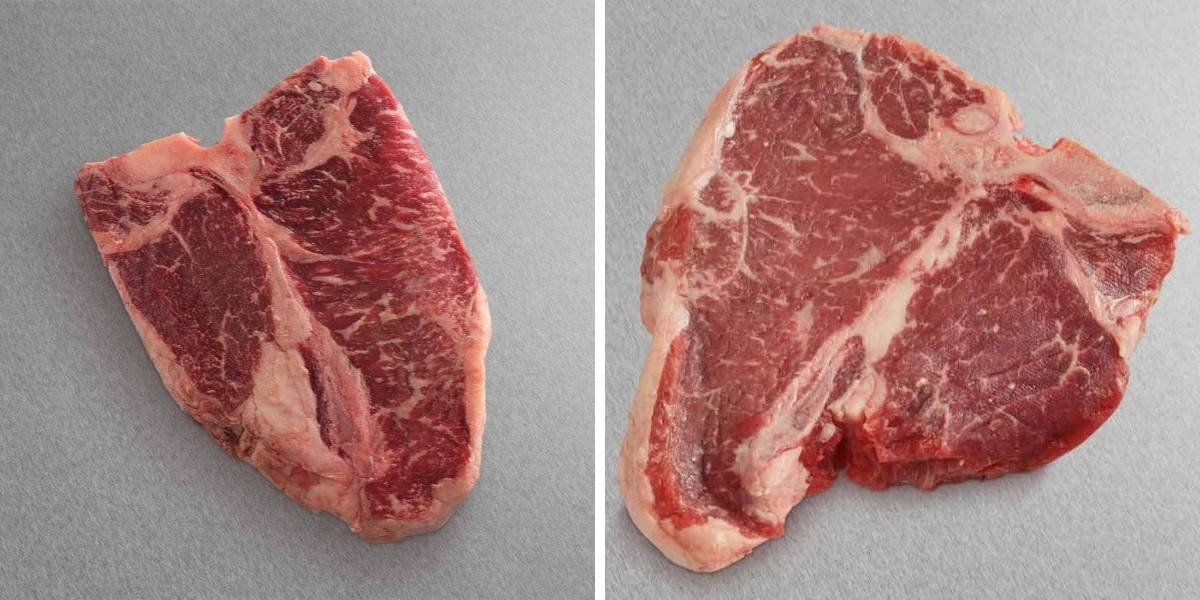
Snake River Farms offers five distinct types of porterhouse steak, ranging in size from 8 oz to 32 oz, at varying pricing ranges.
American Wagyu Black Grade, American Wagyu Gold Grade, American Kurobuta, and USDA prime dry-aged are among the grades available.
Check Price on Snake River Farms
Crowd Cow
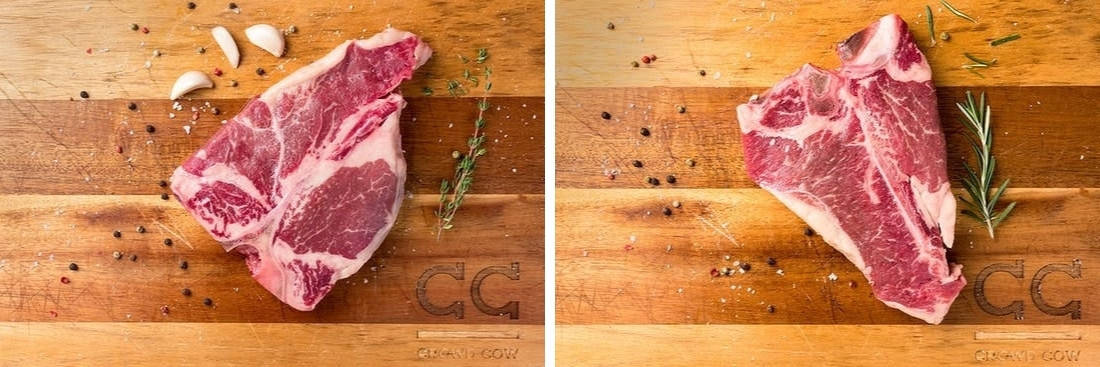
Crowd Cow offers three distinct porterhouse steaks, including a 45-day dry-aged option for customers looking for unrivalled tenderness and a characteristic nutty, buttery, dry-aged taste.
The average weight of these steaks is 1 pound per steak.
Is Charles Dickens Responsible for Naming the Porterhouse Steak?
When you search around for the name “Porterhouse Steak” you’ll find more than one source claiming to be the original namesake.
During the 1800s, travelers across the United States often rested at a lodging known as a ‘porterhouse.’ Back then people traveled by train, horses or coaches, so these guest houses were close to a railroad or coach stop. These places provided both food and lodging for those hungry and tired travelers. We know that the sweet dark ale got its name from the ‘porters’ who drank it. See the connection here?
In a 2005 N.Y. Times Q & A piece titled, “A Juicy Story,” author Michael Pollack credits a New York porterhouse owner, Martin Morrison, with inventing the name around 1814. He is mentioned in a book called “The Market Almanac” published in 1867.
Morrison is said to have fed a sea captain who was hungry and “empty as a gull.” The captain insisted on having the same type of steak each day, and it soon became popular. Somehow the steaks and the name caught on. Although there is no proof that it happened, the Oxford English Dictionary credits Morrison for the name.
They’re a few other versions, but the best story of all is the one about Charles Dickens, the Author of “A Christmas Carol.”
In 1842, Charles Dickens dined on an enormous steak at one of the porterhouses in Sandusky, Ohio. Later, when he traveled and stayed at one of the hotels in Buffalo, NY, he had specifically requested the owner for the “steak as you get at the porterhouse in Sandusky.”
According to the Cambridge Chronicle, the hotel owner began advertising his large T-bone steaks that Charles Dickens adored as porterhouse steak and made his fortune.
Of course, there is little proof of anyone’s claim so any of these stories could be true. However, there is evidence that the “porterhouse steak” was a common term in the late 1800s. Mark Twain (Samuel Clemens) even wrote how he longed for a thick juicy porterhouse steak in his 1880 book, “A Tramp Abroad.”
Regardless of the name’s origin, this expensive piece of meat needs to be cooked the right way.
Grilling the Perfect Porterhouse or T-Bone Steak
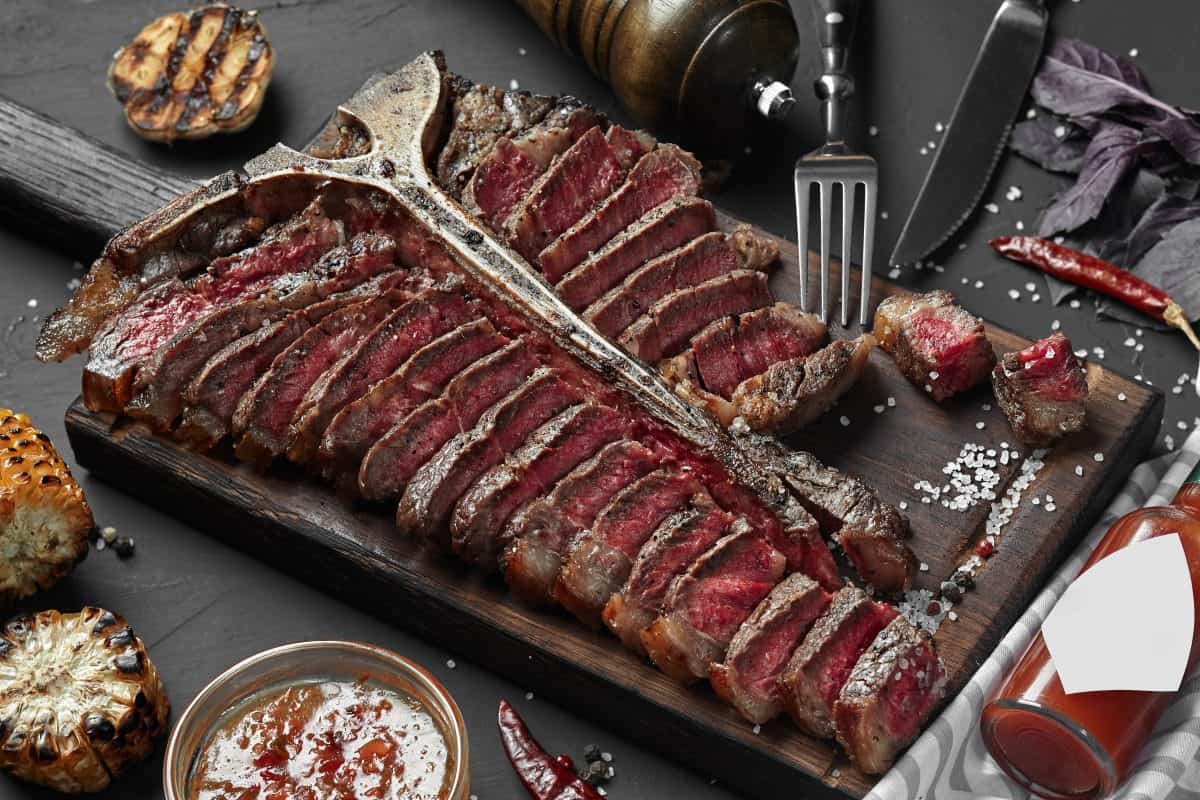
Because T-bones have two different types of meat, you’ll want a fire with 2 zones.
The filet has very little fat and will cook faster than the N.Y. strip side. The strip loin has plenty of fat to self-baste, so you’ll want to use more heat.
Set up a 2-Zone Fire and One Safe Zone
If you aren’t using gas, use 100% natural wood charcoal. Charcoal burns hotter than briquettes, and it has no additives that could alter that heavenly beefy taste.
Once you have your charcoal grill going and glowing, try and make three different areas in the bottom of the grill. 1/3 with a double layer of charcoal, 1/3 with a single layer and 1/3 without coals for a safe zone if you have a flare-up. (a slightly different take on the classic two-zone grilling set-up.)
Use Coarse Seasonings
Most steak lovers agree that coarse salt and pepper are all you need to season a steak properly. Adding garlic and other spices are personal preferences.
Keep Your Fire Hot and the Grill Oiled
If you don’t have thick steel or cast-iron bars for your grill grates, they are worth getting. They retain the heat longer and leave better grill marks.
Oil your grate just before setting the steaks on. You can use oil on a paper towel, a piece of fat skewered on the end of a fork or cooking spray. Be very careful with cooking spray as the propellant is flammable.
Get Those Steaks On!
Place the steaks with the strip side over the hottest part of the fire and the filet over the single layer of charcoal. Leave them for 2 ½ to 3 minutes. Turn them 90⁰ or a quarter turn to make perfect grill marks. After another 2 ½ to 3 minutes, flip the steaks and repeat the process for that side.
After you remove the steaks, give them a rest for about 8 to 10 minutes before cutting. They will continue to cook and increase another 5 degrees.
Grilling aficionado, Malcom Reed, demonstrates his method of cooking fat porterhouse steaks in this short video.
Tips On Choosing and Grilling a Fabulous T-Bone Steak
Here are some guidelines that will guarantee you a great steak every time:
- The meat should be deep red, not brownish.
- Look for plenty of marbling and the fat should be white, not yellowish.
- Remove the steak from the fridge for about an hour to two before
- Lightly brush with olive oil before adding seasoning to help it stick.
- Remember, the salt will remove the moisture and leave your steak dry. Season the steaks just before grilling.
- Use a scorching fire with no flames, just coals.
Whether it’s T-bone or porterhouse, when you prepare and grill them right, they’re one of the most flavorful, juiciest meats you’ll ever have on your plate.
So next time you’re thinking of grilling a T-bone, do something different and upgrade to a porterhouse.
Get the thickest cut you can. A thick porterhouse will feed two to three people and leave enough for steak hash the next day.
Leftover steak tastes great and is the perfect ingredient for soup, beef, and beans chimichangas, quesadillas, a salad topping or even in your breakfast omelette.
Happy grilling!


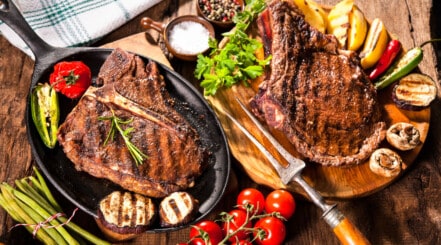
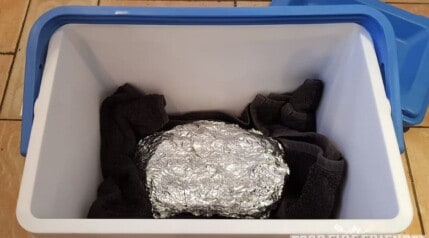
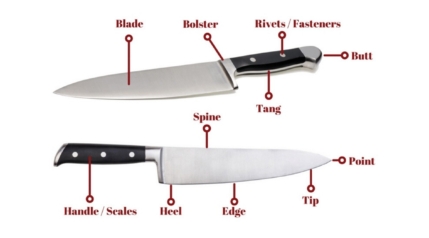
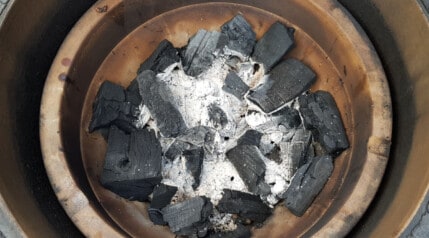
Wow! The Porterhouse vs T-Bone article is GREAT! I knew Porterhouse was better — just by eating them and T-Bones.
But I didn’t know how to best pick one — didn’t know about that little tough vein. We don’t have them often because of the price – also we have a market with a great butcher section, and we can get some great, less expensive beef. They have Prime Top Sirloin, Baja Filet, and a new cut we’ve tried — Picanha Coulotte (sp?).
We shop the weekly sales, so we almost never run out of good choices on sale.
Thank you for this great article — and the video. You put A LOT of time and research into this! When do you have time to BBQ? HA! Looking forward to reading more of your articles.
Hi Chris,
Thanks again for the kind words 🙂 The site is a lot of work, but I’ve had a good 2-years building it now. It’s been slow, but getting to the stage now where it feels ‘full’ and getting useful. I just need to organize things better, so people can find stuff more easily.
I’m quite lucky to be able to BBQ effectively whenever I wish because I work from home a lot. So I can sit outside, and bounce between work and cooking with ease. A good position to be in.
I LOVE picanha! You can roast it whole, or it does really well on the rotisserie. We have it every few weeks or so. Check below for a few pics of one picanha cook: HEAVILY salted on the fat side — more normally on all other surfaces — then left for a few hours before cooking. Next, get my daughter to poke it (not necessary, I just thought it was a cute pic, lol), then rotisserie at medium heat until internal temp reaches about 130f, then slice thinly. It’s a wonderful cut and everyone I cook it for loves it — particularly with a good chimichurri sauce!: